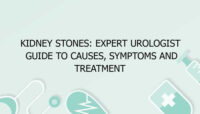A loose tooth can be a source of discomfort and concern, whether it’s experienced by children during their developmental stages or adults dealing with issues related to gum disease, trauma, or other health conditions. In either case, understanding the causes, symptoms, types, and available treatments for loose teeth is vital for both prevention and management. This article will provide an in-depth exploration of loose teeth, including practical advice on treatment, as well as answering frequently asked questions to help you navigate this common dental concern.
What is a Loose Tooth?
A loose tooth refers to a tooth that is not firmly fixed in its socket. This condition can occur in both children and adults, but the underlying reasons for the looseness may differ between the two groups. In children, loose teeth are a natural part of the teething process as baby teeth fall out to make way for permanent adult teeth. In adults, however, loose teeth are typically a sign of underlying dental issues that require attention, such as gum disease, trauma, or other health problems.
In children, the process of tooth loss is generally harmless and expected. However, for adults, a loose tooth can signal that something more serious is affecting the tooth and its surrounding structures. If not treated properly, the problem can lead to tooth loss or further complications.
Causes of a Loose Tooth
The causes of a loose tooth vary greatly between children and adults, although in both cases, the primary reason is related to the health of the tooth and the gums. Let’s explore some of the most common causes:
1. In Children: Natural Tooth Shedding
In children, a loose tooth is usually a sign that their baby (primary) teeth are falling out to make room for permanent teeth. This is a normal and natural part of the growth process, usually occurring between the ages of 6 and 12. The loosening of baby teeth happens because the permanent teeth are pushing up beneath them, causing the roots of the baby teeth to dissolve, making them loose enough to fall out.
2. Gum Disease (Periodontitis) in Adults
In adults, one of the most common causes of a loose tooth is periodontal disease, which includes gingivitis and periodontitis. Gum disease occurs when plaque, bacteria, and tartar build up along the gumline, causing inflammation and infection in the gums. Over time, this can lead to the breakdown of the bone and tissue that support the teeth, making them loose.
- Gingivitis is the early stage of gum disease and typically causes redness, swelling, and bleeding of the gums.
- Periodontitis is a more advanced stage of gum disease that can cause the gums to recede and the bone to deteriorate, leading to tooth mobility and loss if not treated promptly.
3. Trauma or Injury
Trauma to the teeth due to an accident, fall, or blow to the mouth can cause a tooth to become loose. Even a minor injury can lead to a loose tooth if the supporting ligaments and bone structures are damaged. In more severe cases, trauma can also cause the tooth to fracture or break, requiring dental intervention.
4. Teeth Grinding (Bruxism)
Grinding or clenching your teeth, often while sleeping, can cause damage to the teeth and gums, leading to loose teeth over time. Bruxism puts excessive pressure on the teeth and their supporting structures, leading to wear on the enamel, gum recession, and even tooth mobility. If left untreated, bruxism can result in the loosening of teeth.
5. Osteoporosis
Osteoporosis is a condition that causes the bones to become weak and brittle. This can affect the bones in the jaw, leading to tooth loosening. People with osteoporosis may have a higher risk of losing teeth because the bone density that supports the teeth is compromised. This condition is more common in older adults, particularly postmenopausal women.
6. Poor Oral Hygiene
Neglecting regular brushing and flossing can lead to plaque buildup and cavities. If left untreated, cavities can destroy the tooth structure, causing the tooth to become loose. Moreover, poor oral hygiene can lead to gum disease, further contributing to the problem.
7. Pregnancy Hormonal Changes
Pregnancy causes hormonal changes that can affect the gums and teeth. These changes can make the gums more susceptible to inflammation and infection, which may lead to gum disease and loose teeth. Pregnant women are at a higher risk for developing a condition called pregnancy gingivitis, which can cause swollen, bleeding gums and tooth mobility.
8. Systemic Health Conditions
Certain systemic health conditions can also contribute to tooth loosening. For instance:
- Diabetes: High blood sugar can affect the health of your gums and increase the risk of developing gum disease.
- Cancer treatments: Radiation and chemotherapy can weaken the bones and tissues in the mouth, leading to loose teeth.
- Vitamin deficiencies: Lack of essential vitamins like vitamin C can lead to weakened gums and teeth, making them more prone to loosening.
Symptoms of a Loose Tooth
The most obvious symptom of a loose tooth is the movement of the tooth within its socket. However, depending on the cause of the looseness, other symptoms may accompany it:
1. Visible Tooth Movement
The most apparent sign of a loose tooth is the ability to move the tooth slightly with your tongue or finger. In children, this movement is a natural part of tooth shedding, but in adults, it may be a sign of an underlying problem like gum disease or trauma.
2. Pain or Sensitivity
If a loose tooth is caused by trauma, infection, or gum disease, it may be accompanied by pain or sensitivity. The pain may be localized around the affected tooth, or it may radiate to other areas of the mouth. The tooth may also feel sensitive to hot or cold foods and drinks.
3. Swollen or Bleeding Gums
If gum disease is the cause of the loose tooth, the gums may appear swollen, red, or inflamed. Bleeding gums when brushing or flossing are another common sign that gum disease may be contributing to the tooth’s looseness.
4. Bad Breath
A loose tooth caused by gum disease or infection can also lead to persistent bad breath (halitosis). This occurs due to the bacteria and plaque buildup in the mouth, which can create an unpleasant odor.
5. Gum Recession
In cases of periodontal disease, you may notice that your gums are receding from the base of the teeth, further contributing to tooth mobility. Gum recession can expose the tooth roots, making the teeth appear longer and more prone to loosening.
Types of Loose Teeth
Loose teeth can be classified based on their cause and severity:
1. Physiological Loosening (Normal Tooth Shedding)
This type of loose tooth occurs in children during the natural process of losing baby teeth. It typically happens between the ages of 6 and 12, as baby teeth make way for permanent teeth.
2. Gum Disease-Induced Loose Teeth
When a tooth becomes loose due to gum disease, the mobility is typically caused by the breakdown of bone and gum tissue around the tooth. The severity of looseness can range from slight mobility to complete tooth loss, depending on how advanced the gum disease is.
3. Trauma-Induced Loose Teeth
Teeth that are loose due to injury or trauma may experience varying degrees of movement. In some cases, the tooth may be displaced from its original position, or it may be partially knocked out of its socket.
4. Age-Related Loose Teeth
As people age, their risk of tooth loss increases due to the natural wear and tear of the teeth, as well as changes in bone density and gum health. Older adults may experience loose teeth due to osteoporosis or long-standing untreated gum disease.
5. Bruxism-Induced Loose Teeth
Teeth that are loosened by bruxism (teeth grinding) will typically experience gradual mobility over time, especially if the grinding has caused wear and tear on the tooth enamel and the gums.
Treatment for Loose Teeth
The treatment for a loose tooth depends on the underlying cause. Here are some of the most common treatments available:
1. For Children (Normal Tooth Shedding)
For children, loose teeth due to normal tooth shedding don’t require treatment. The best course of action is to allow the tooth to fall out naturally. However, parents should encourage good oral hygiene to prevent infections and ensure that the remaining teeth stay healthy.
2. For Gum Disease (Periodontal Disease)
- Scaling and Root Planing: Professional cleaning to remove plaque and tartar below the gumline.
- Antibiotics: Prescription antibiotics may be used to reduce infection and inflammation.
- Surgical Treatment: In severe cases, surgical treatments like flap surgery or bone grafting may be necessary to restore gum health and prevent further tooth loss.
3. For Trauma-Induced Loose Teeth
If a loose tooth is the result of trauma, your dentist may stabilize the tooth using a splint or other methods. If the tooth has been displaced, the dentist will reposition it in its proper place and secure it. In some cases, a root canal may be needed if the pulp of the tooth is damaged.
4. For Teeth Grinding (Bruxism)
If bruxism is causing tooth mobility, treatment may involve wearing a mouthguard or night guard to prevent grinding while sleeping. Stress management techniques and dental adjustments may also be recommended to reduce the damage caused by bruxism.
5. For Osteoporosis
If osteoporosis is the underlying cause of a loose tooth, treating the bone condition with medications and lifestyle changes
may help prevent further tooth loosening. Your dentist may also recommend special dental care techniques, such as using softer toothbrushes or fluoride treatments.
FAQ About Loose Teeth
What should I do if my child has a loose tooth?
If your child has a loose tooth, there’s no need for immediate intervention unless the tooth is causing pain or discomfort. Generally, a loose tooth in children is a normal part of their development. However, encourage your child to practice good oral hygiene, and avoid forcing the tooth out. If the tooth is causing significant pain or has not fallen out on its own after a long time, consult with a pediatric dentist.
How can I tell if a loose tooth is due to gum disease?
If a loose tooth is caused by gum disease, other symptoms, such as bleeding gums, gum recession, and bad breath, are likely present. Additionally, the tooth may feel tender or painful to the touch. If you notice any of these symptoms, it’s important to consult with a dentist for a thorough examination and treatment plan.
Can a loose tooth heal on its own?
In some cases, a loose tooth due to mild gum disease or trauma may heal on its own if the underlying cause is addressed. However, it is important to seek professional dental care to ensure the tooth is properly stabilized and that no further damage occurs. Severe cases may require surgical intervention or even tooth extraction.
Can a dentist fix a loose tooth?
Yes, a dentist can often stabilize a loose tooth, particularly if it is caused by gum disease or trauma. Treatments such as scaling and root planing, splinting, and other restorative techniques can be used to help re-secure the tooth. In cases where the tooth is severely damaged, more advanced procedures like implants or crowns may be necessary.
What are the long-term consequences of untreated loose teeth?
If a loose tooth is left untreated, it can lead to further complications, such as worsening gum disease, bone loss, and eventual tooth loss. In severe cases, untreated loose teeth may result in the loss of several teeth and the need for extensive restorative treatments.
Titles of 10 Medical Journals on Loose Teeth and Dental Health
| Title of Journal | Description |
|---|---|
| Journal of Periodontology | Focuses on periodontal disease and its effects on tooth stability and health. |
| International Journal of Dental Hygiene | Studies the role of oral hygiene in preventing conditions like loose teeth due to gum disease. |
| Clinical Oral Investigations | Publishes research on clinical practices and innovations in treating loose teeth, particularly in relation to trauma and orthodontic treatments. |
| Journal of Clinical Periodontology | Offers detailed insights into the management and treatment of periodontal disease and its impact on loose teeth. |
| British Dental Journal | Covers a wide range of dental topics, including case studies on loose teeth caused by various health conditions. |
| American Journal of Orthodontics and Dentofacial Orthopedics | Focuses on orthodontic treatments and how they can prevent tooth mobility and misalignment. |
| Journal of Oral Rehabilitation | Discusses the rehabilitation of patients with dental issues, including the restoration of loose teeth. |
| Dental Traumatology | Specializes in the study of dental trauma and its effects on tooth stability, including treatment for loose teeth caused by injury. |
| Journal of Prosthetic Dentistry | Offers research and clinical advice on restoring teeth affected by mobility and other dental issues. |
| Oral Surgery, Oral Medicine, Oral Pathology, Oral Radiology | This journal publishes studies on oral conditions that affect tooth mobility, from surgery to radiology. |
This comprehensive guide on loose teeth provides valuable insights into the causes, symptoms, types, and treatments of this condition. By understanding the underlying issues and seeking prompt dental care, individuals can prevent further complications and maintain a healthy smile.


